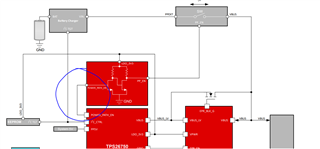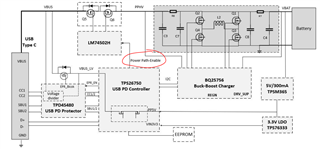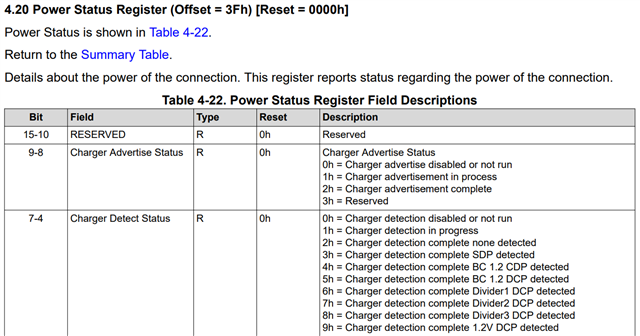Other Parts Discussed in Thread: BQ25756,
Tool/software:
When is POWER_PATH_EN asserted or not asserted? I might be overlooking it but I can't seem to tell from the datasheet.
I'm assuming it is asserted according to the Dead Battery Configuration in Table 7-6 before a configuration is loaded, then asserted after a PD contract is negotiated that meets the required sink PDOs, also taking into account the "Auto Disable Sink Upon Capability Mismatch" configuration bit. What else effects when the sink path is enabled? Liquid detection?




